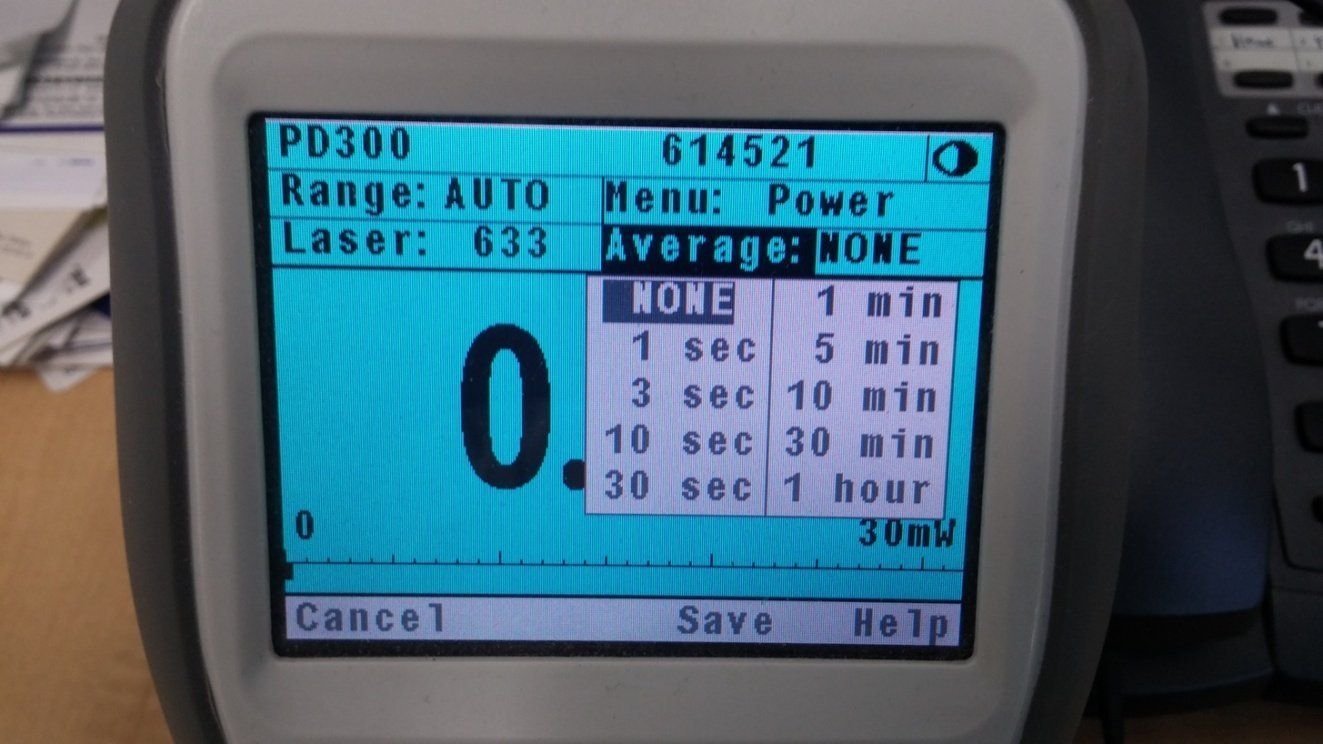We’ve all been there before.
You just want to measure the laser power with a simple power meter, but before you write down the reading, you notice it’s changed. You take a closer look and see that it’s changing continuously.
Why is the reading unstable?
These kinds of fluctuations are common, usually because of unstable ambient conditions, or the laser itself is not steady.
Many lasers take some time to “warm up,” so if you recently turned it on, try waiting a few minutes for it to level off.
Otherwise, use one of the following methods.
How to deal with unsteady laser power readings
There are two types of instability and they should be dealt with in different ways.
- “Fluctuations,” with a short time-constant (as shown on 00:36 on the video above)
- “Drift” has a longer time-constant (as shown on 00:39 on the video above)
So, before you try any solution below, you should look at the readings over time to get a sense of which phenomenon is occurring.
Accounting for fluctuations in laser power
If you see quick, sporadic fluctuations, you can average this out with our meter’s “average” feature. Just select the averaging time and you’re good-to-go!
(Note – This works for random noise. If the fluctuations are not random, averaging will not work.)
Accounting for drift in laser power
What if you see a slow-but-steady drift in laser power (up or down)? Averaging won’t help; it will just slow down the drift.
In this case, you should take readings at regular intervals. Take “enough” measurements to establish a pattern that you can refer back to. For example, let’s say the power was 1.5 W just before you used the laser and 1.3 W just after. If you see that the pattern you mapped out is roughly linear, you can reasonably estimate that the laser power was 1.4 W when the laser was used.
Summary
Let’s wrap this up with a quick step-by-step:
- Check if the laser just needs to warm up.
- Take a few minutes to see what the laser trend is. (Short or long instability?)
- Use averaging for short fluctuations.
- Use “mapping out” of the pattern for long-term drift.
Questions? Feel free to comment below.











Leave a Reply
Your email address will not be published. Required fields are marked *